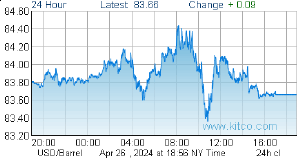“It’s not unheard of on the Cadillac Trend to have structures than run for kilometres.” – Frank Basa, BMR interview, July 20, 2010.
After last week’s Gold Bullion news release, which was very bullish in tone, and our 18-minute interview yesterday with GBB President and CEO Frank Basa, we are convinced that Gold Bullion is in the process of turning the “east-northeast” area of the LONG Bars Zone into a very significant discovery that has major ramifications for the potential of this project, 65 kilometres west of Osisko’s (OSK, TSX) massive Canadian Malartic Deposit.
“We keep on hitting mineralization even at depth,” Basa told us. He was upbeat, relaxed, and I could also sense that he was trying to restrain himself from saying too much. He’s clearly frustrated at the slowness of the assay labs but he has gone out of his way to reassure investors that the company is extremely encouraged with how its 20,000 metre Phase 2 program is proceeding.
We’ve analyzed last week’s news release and Basa’s comments yesterday. Here’s our take (in point form) on what appears to be unfolding:
- Drilling in the east-northeast section is consistently hitting the same type of altered feldspar porphyry rock, with some quartz veining and in some cases visible gold, found in GR-10-17 which intersected 65.5 metres of 1.21 g/t Au;
- “Multiple altered zones” are being hit consistently in ALL directions surrounding GR-10-17 – north, south, east and west;
- Phase 2 holes are going twice as deep as Phase 1 holes and are intersecting mineralization at depth, meaning between 150 and 300 metres vertical;
- Following Phase 2, the east-northeast area will be approximately equal in its dimensions to the current Preliminary Block Model area to the west giving a combined length of at least 1.2 kilometres (1200 metres) and a width of several hundred metres;
- Drilling will continue at Granada through at least the remainder of this year with Basa hoping to complete an additional 30,000 metres by year-end as part of an even larger Phase 3 program.
We also know, based on last week’s GBB news release and a publicly available (Quebec Ministry of Mines) 1994 report on the Granada Eastern Extension that:
An east-west trending zone of shearing, alteration and quartz veining (with intrusions of syenitic feldspar porphyry) extends almost directly east of GR-10-17 (for 1800 metres) to LONG Bars Zone 2 which features a 1000 metre long shear zone. Several northeasterly fault zones cross the shear zone and are considered prime targets for possible economic gold concentrations. Numerous vein zones, hosted by both Granada Formation conglomerate and feldspar porphyry, have been delineated historically in LONG Bars Zone 2 through trenching with considerable visible gold noted. Sample assays in the 1930′s returned grades as high as 19 g/t Au while KWG got grab sample values as high as 13 g/t Au during some ground work in the summer of 1993. At the eastern end of this area, an historic showing known as the Bert Vein returned grades in excess of 200 g/t Au – “the average assay of three bulk samples was 7.00 oz Au/T (page 11 of the report).”
If LONG Bars Zone 1 connects with LONG Bars Zone 2, and if LONG Bars Bars Zone 2 measures up through drilling, then the length of the Granada Gold Deposit mineralized area is potentially a massive 4,000 metres – twice the length of Canadian Malartic. Those are a couple of big “ifs”, for sure, but it gives you a good picture of the incredible blue sky potential of Granada. This could turn out to be bigger than any of us can really imagine.
In any event, given the fact 2.4 to 2.6 million ounces have already been identified within the Preliminary Block Model as a potential non-compliant resource, at the very least we see excellent potential for Gold Bullion doubling those ounces which makes the company’s current $55 million market cap incredible attractive. With 30,000 more metres of drilling after Phase 2 by the end of this year, investors should have a pretty good idea if that 5 million ounce target can be achieved or even exceeded.
GBB’s weakness over the past 4 trading sessions can be explained very simply as “technical trading”. The stock’s 20-day moving average has gone into decline for the first time since March, triggering some nervous nellies who don’t understand the fundamentals to dump their shares. This is a normal technical event for a stock in the early stages of a massive move, and sometimes these are pros at work who are “painting the chart” in an effort to accumulate as much cheap stock as they can. This is what I call the “Sweet Spot” entry point – the pullback that offers an incredible opportunity to load up on a fundamentally (and technically) very strong play. Astute investors understand the money that can be made by buying into these special situations.
Phase 1 drilling demonstrated that mineralization at Granada is widespread and near-surface, ideal for open-pit mining. A 30,000 tonne bulk sample in 2007 graded 1.62 g/t Au which gives the best indication of what the mill grade will be.
Phase 2 drilling is expanding the LONG Bars Zone and hitting mineralization not only near surface but at depth. GENIVAR is quickly developing the east-northeast extension and further drilling will determine if it connects with LONG Bars Zone 2, 1800 metres to the east.
Basa said yesterday he’s hoping the first set of assay results will come by the end of next week.
The Granada Gold Property has become a fascinating geological story and we’re convinced it has given us only a glimpse so far of its real potential.
 BullMarketRun.ca
BullMarketRun.ca







